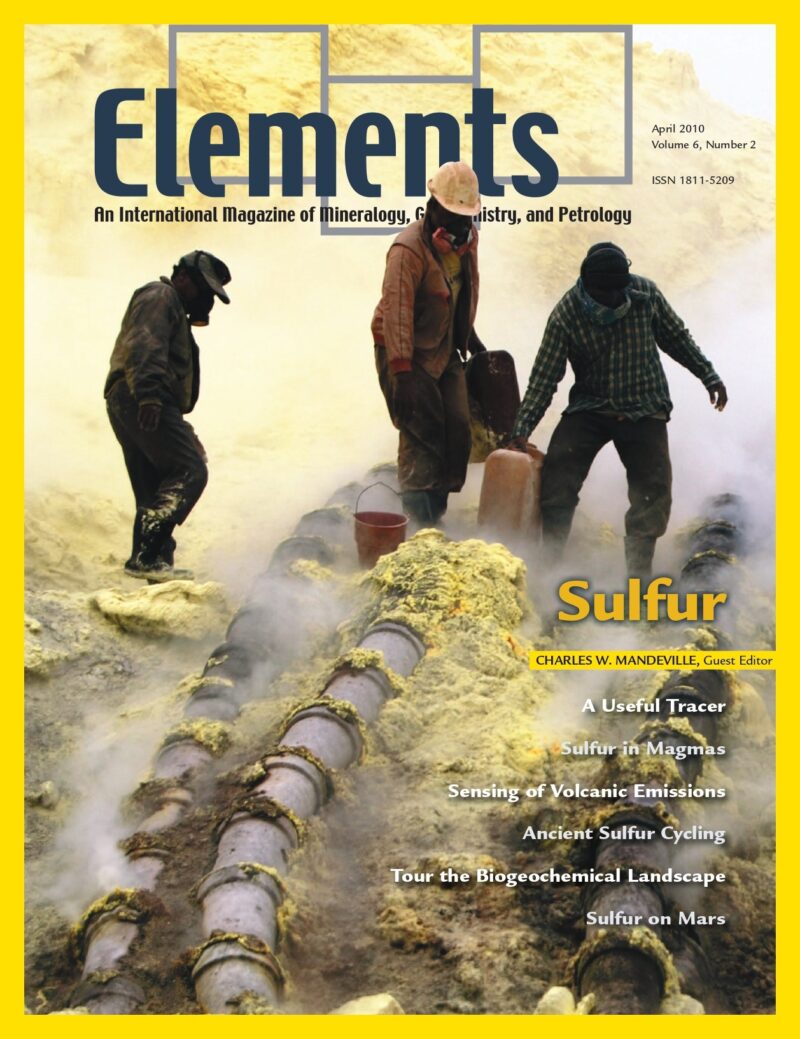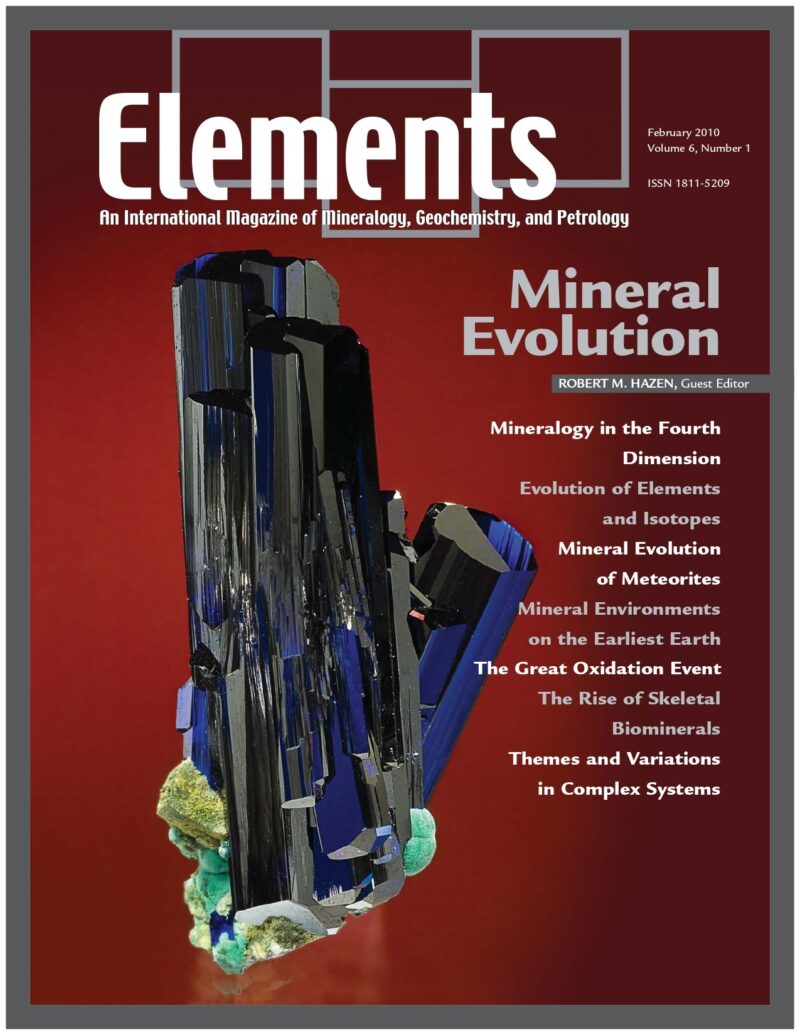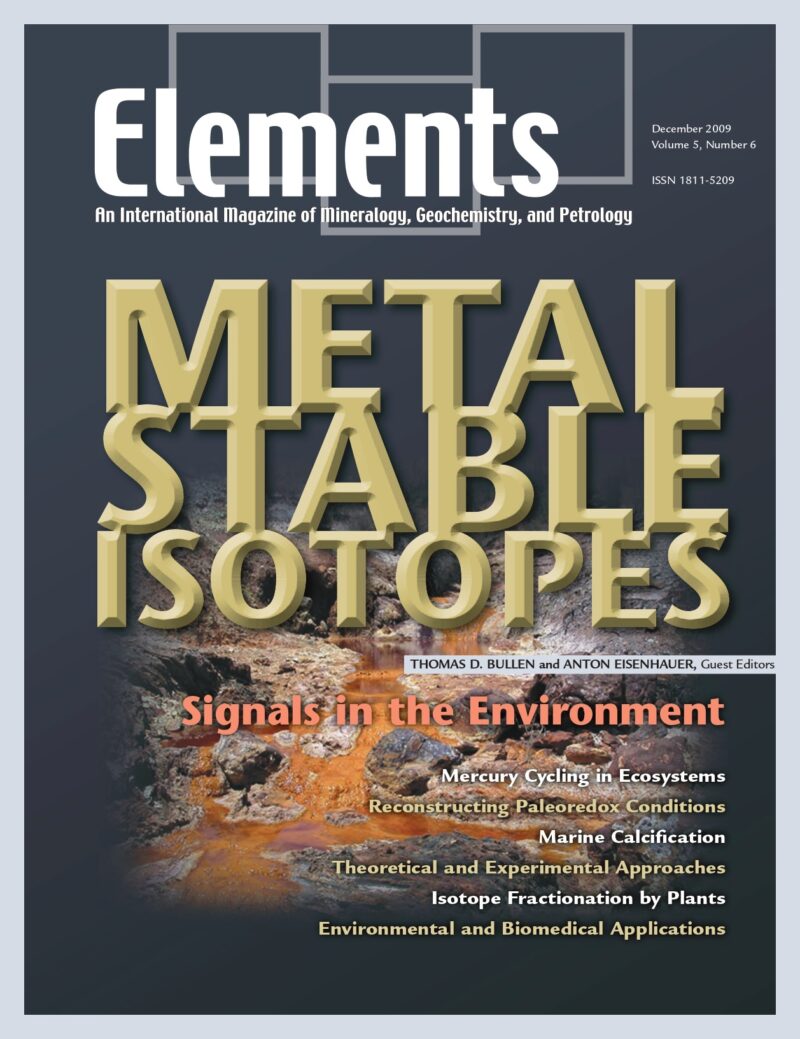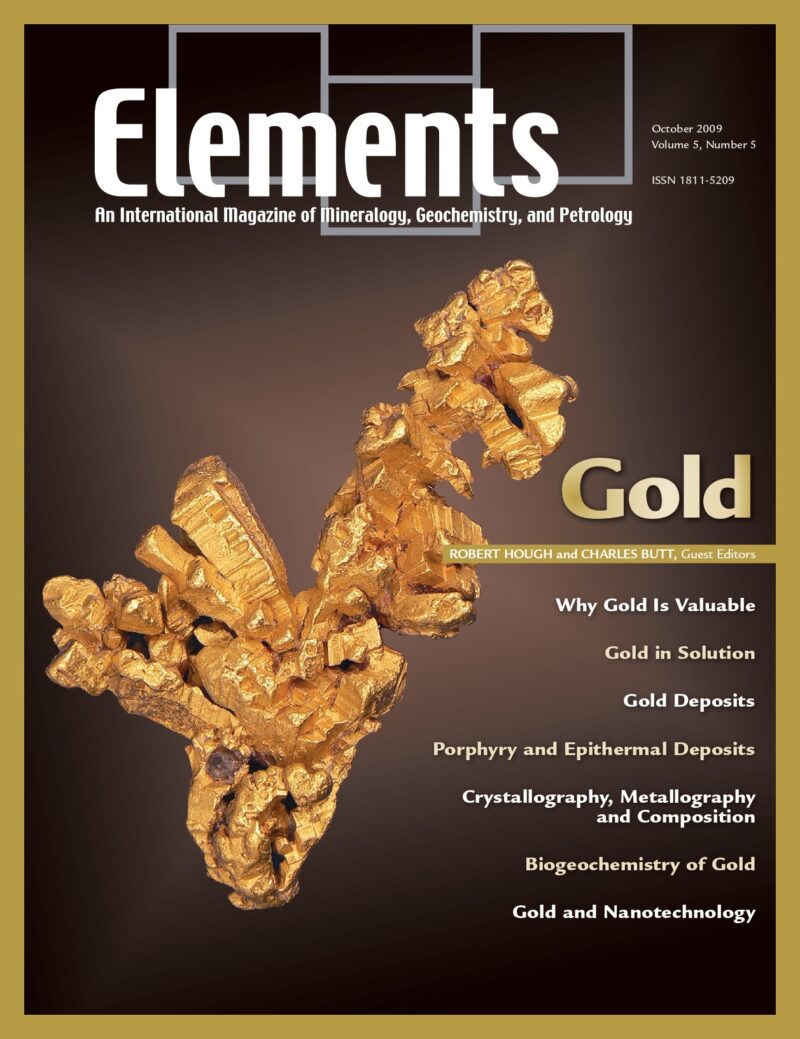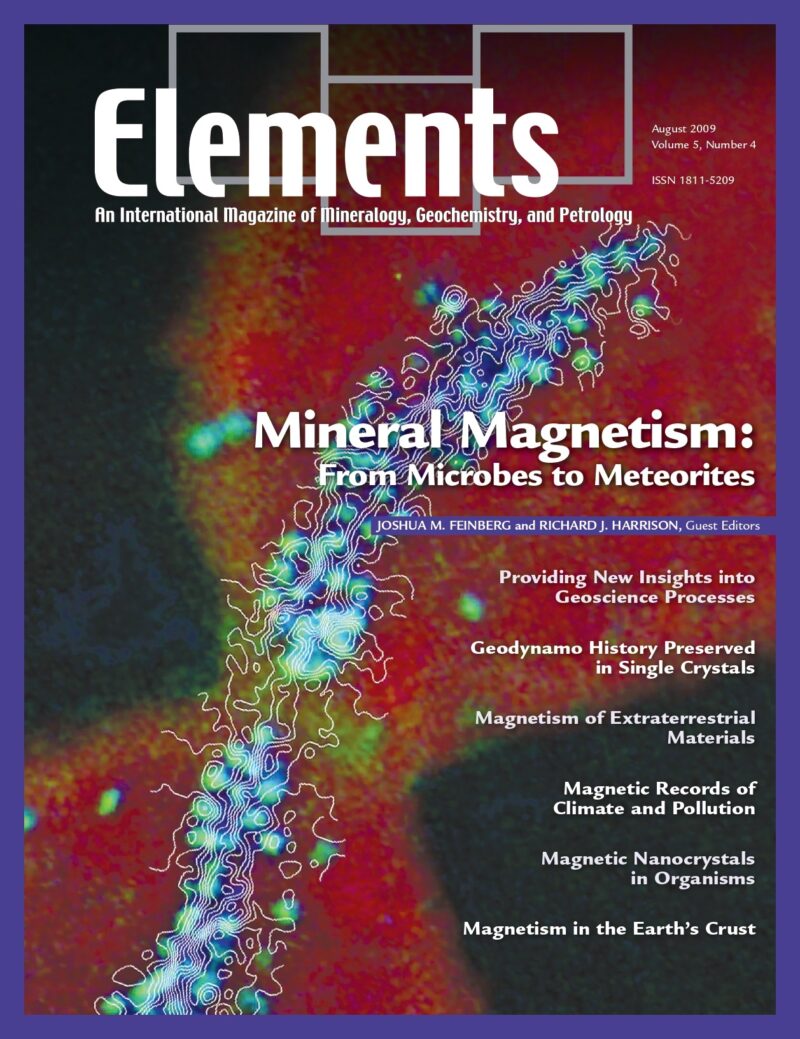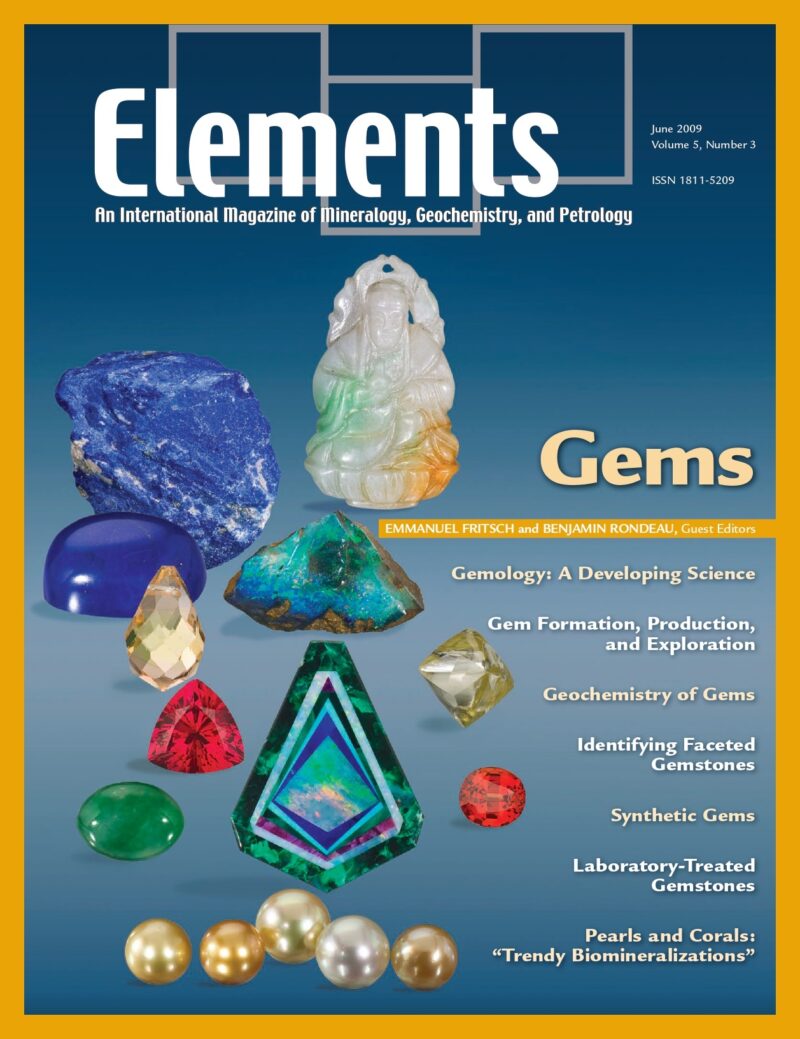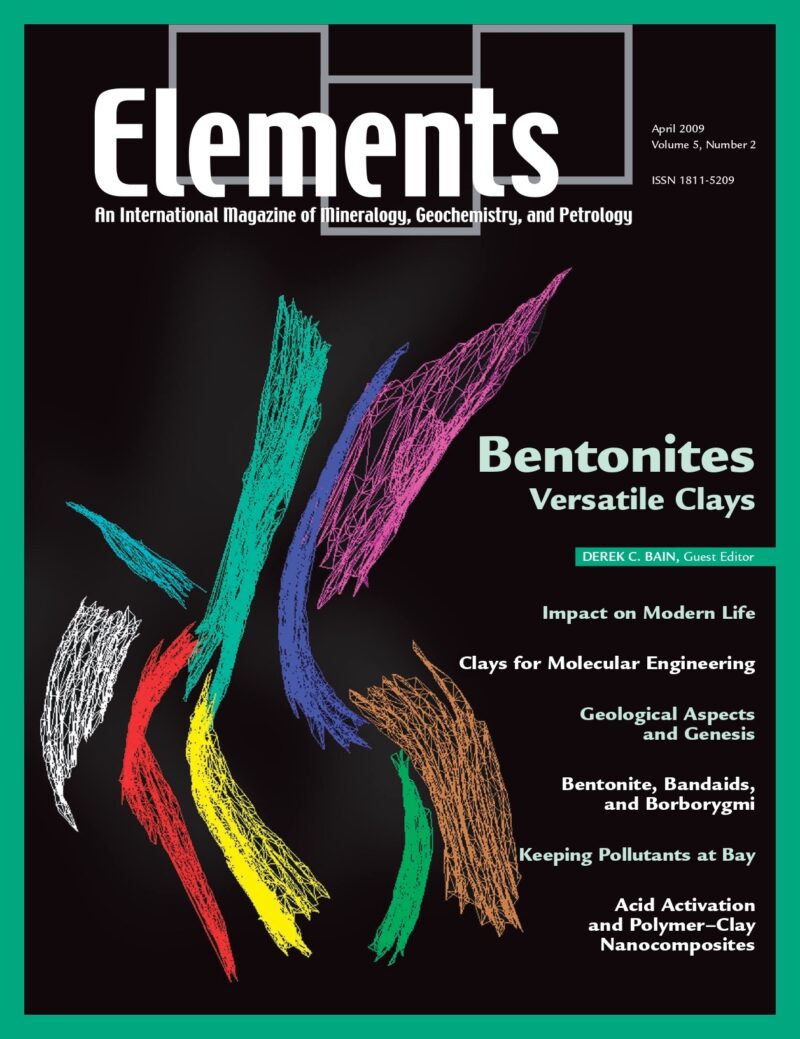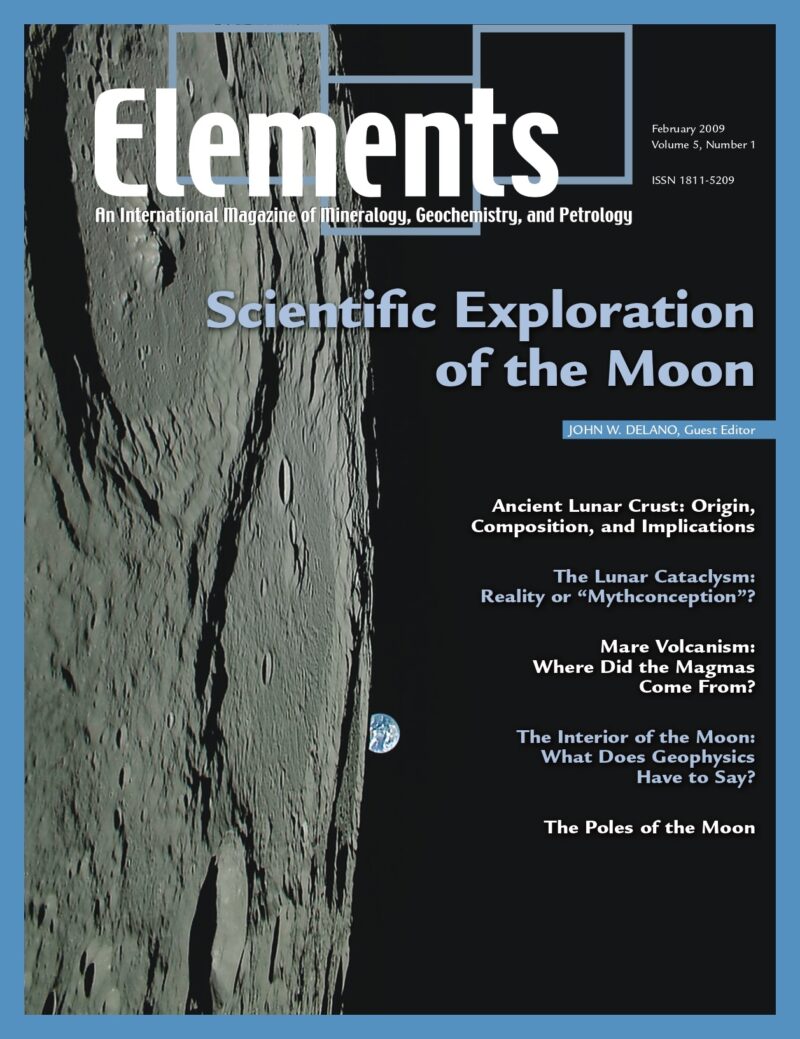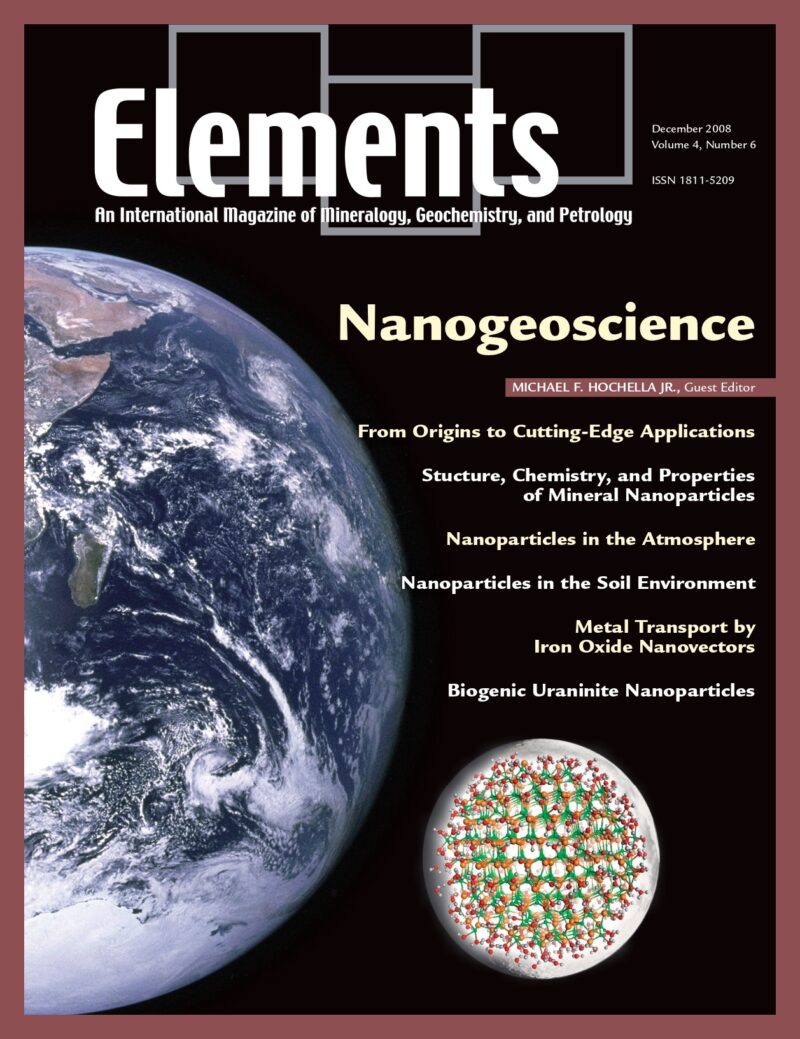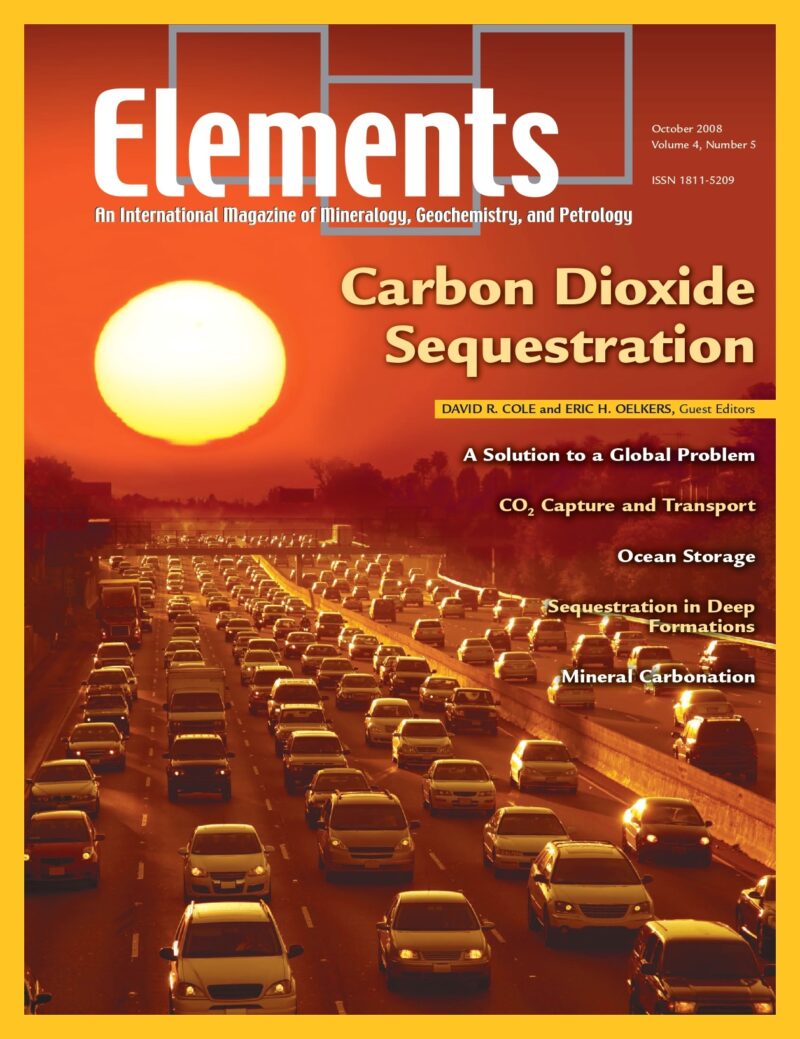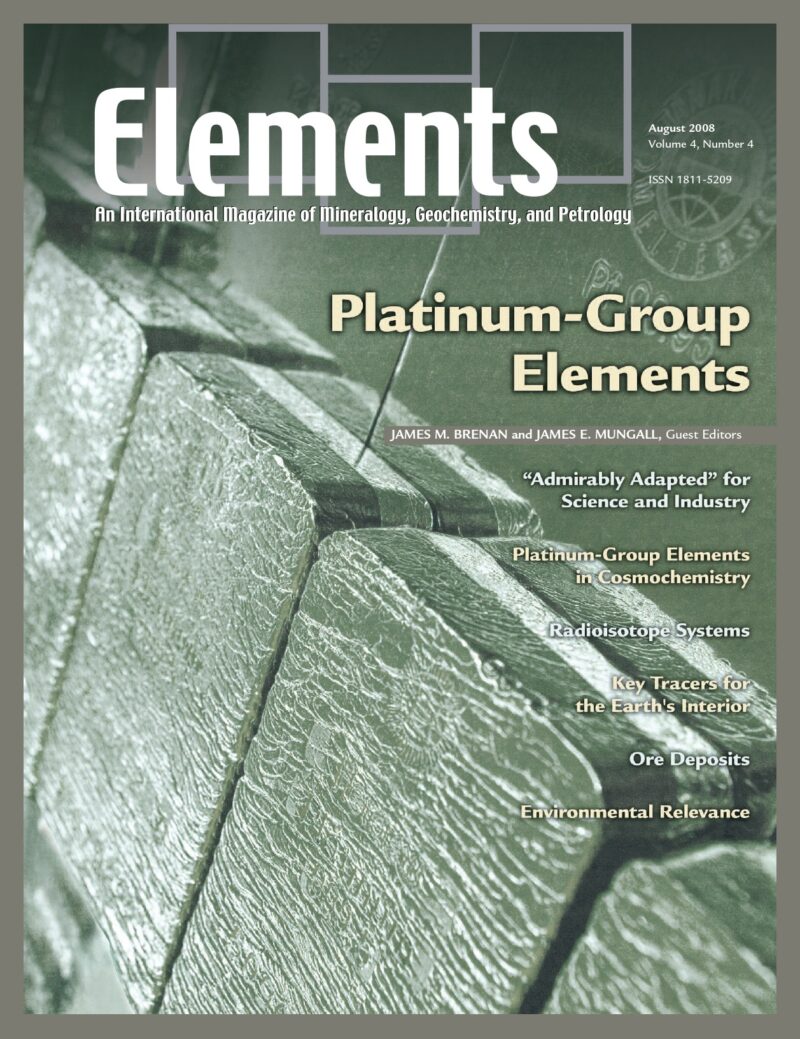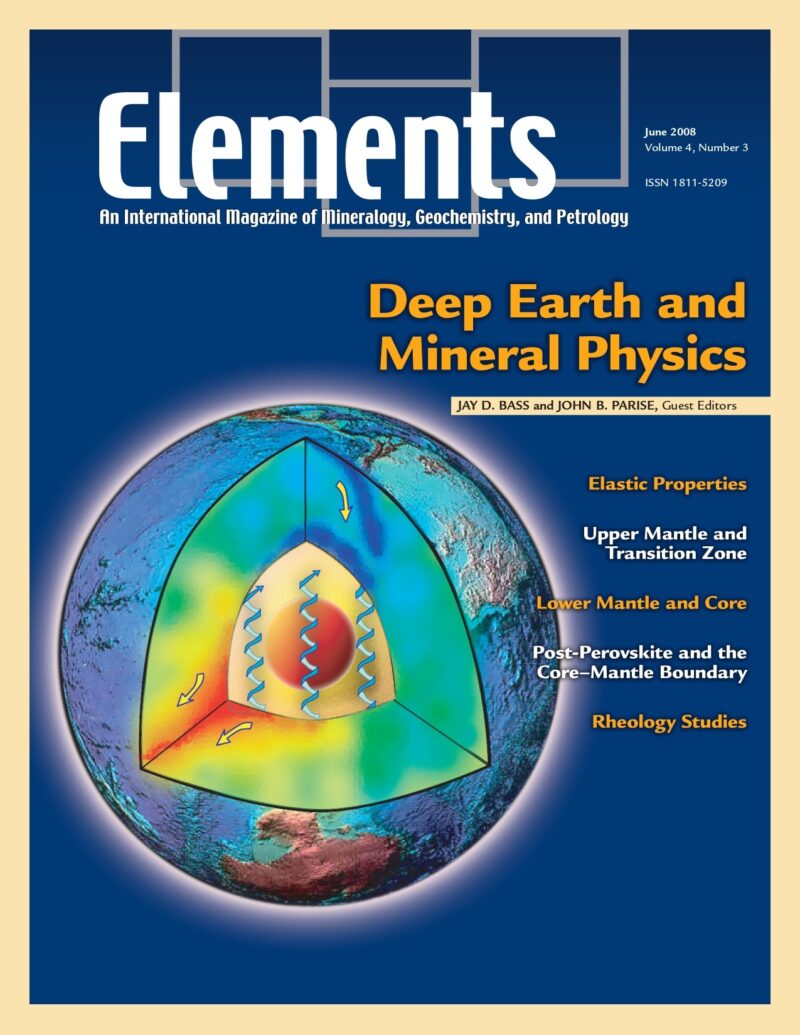-
Sulfur, April 2010, Vol. 6, No. 2
$20.00This issue of Elements focuses on the geochemistry of sulfur in high-temperature, low-temperature, and biogenically mediated processes over a wide range of scales, environments, and time intervals. Sulfur’s multiple valence states (S2to S6+) allow for its participation in a large variety of geochemical and biogeochemical processes.
-
Mineral Evolution, February 2010, Vol. 6, No. 1
$20.00“Mineral evolution,” the study of Earth’s changing near-surface mineralogy, frames Earth materials research with a historical narrative. This 4.
-
Metal Stable Isotopes, December 2009, Vol. 5, No. 6
$20.00During the past decade it has been recognized that the stable isotope compositions of several metallic elements vary significantly in nature due to both biotic and abiotic processing. While this leap in our understanding has been fueled by recent advances in instrumentation and techniques in both thermal ionization and inductively coupled plasma mass spectrometry, the field of metal stable isotope geochemistry has finally moved beyond a focus on development of analytical techniques and toward using the isotopes as source and process tracers in natural and experimental systems.
-
Gold, October 2009, Vol. 5, No. 5
$20.00Gold fascinates researchers in many sciences. As well as being attractive as a precious metal, gold has important physical and electrical properties that cause it to be an ’advanced material’ for manufacturing and drug delivery in medical science.
-
Mineral Magnetism: From Microbes To Meteorites, August 2009, Vol. 5, No. 4
$20.00Magnetic minerals are ubiquitous in the natural environment. They are also present in a wide range of biological organisms, from bacteria to human beings.
-
Gems, June 2009, Vol. 5, No. 3
$20.00Most gems are natural minerals, which, although scarce and small, have a major impact on society. Their value is directly related to proper identification.
-
Bentonites – Versatile Clays, April 2009, Vol. 5, No. 2
$20.00Of all naturally occurring clays, bentonites are arguably the most interesting, versatile and useful. This issue of Elements describes how these fascinating materials occur and how they are used in all manner of applications.
-
Scientific Exploration Of The Moon, February 2009, Vol. 5, No. 1
$20.00Our current understanding of the Moon’s history, interior structure, and chemical composition is based in large part on geochemical data acquired from samples from the U.S.
-
Nanogeoscience, December 2008, Vol. 4, No. 6
$20.00At first glance, nano and Earth seem about as far apart as one can imagine. Nanogeoscience seems to be a word connecting opposites.
-
Carbon Dioxide Sequestration, October 2008, Vol. 4, No. 5
$20.00Storage of carbon in the subsurface involves introduction of supercritical CO2 into rock formations beneath the surface of the Earth, typically at depths of 1000 to 4000 meters. Although CO2 is a relatively benign substance, the volume being considered is large.
-
Platinum-Group Elements, August 2008, Vol. 4, No. 4
$20.00The geoscientific and economic significance of the PGE is immense. Due to their extreme siderophile and chalcophile behaviour, the PGE are highly sensitive tracers of geological processes involving metal and sulfide phases.
-
Deep Earth And Mineral Physics, June 2008, Vol. 4, No. 3
$20.00The field of high-pressure mineral physics is central to our understanding of the Earth’s interior and its evolution. It is also a field that is rapidly advancing.

